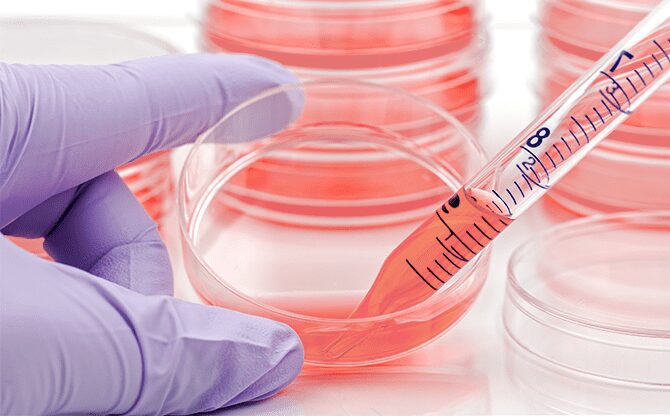

Cell culture plays a pivotal role in modern scientific and medical research. Researchers rely on it for various purposes, from drug development to studying diseases. Cell culture optimization, commonly referred to as cell lines development, is essential to its success and this article will explore five critical elements which influence it significantly.
The first factor to consider in our quest for successful cell culture is the environment in which these cells thrive. Much like humans, cells have their preferences when it comes to living conditions. Maintaining stable temperature, humidity, and CO2 levels within the incubator is crucial. This controlled environment ensures that cells are happy and healthy, promoting their growth and productivity.
The significance of environmental conditions in cell culture cannot be overstated. Fluctuations in temperature or humidity can stress cells, leading to inconsistent results. For example, a drop in temperature might slow down cell metabolism, affecting the rate of cell growth and protein production. Similarly, improper CO2 levels can disrupt pH balance, impacting cell viability and overall health.
Researchers often rely on advanced incubator systems to precisely control these environmental variables. These systems use sensors and feedback mechanisms to maintain optimal conditions, providing cells with the stability they require.
Imagine trying to grow a plant without providing it with the right nutrients – it’s simply not possible. Similarly, selecting the appropriate cell culture media is paramount. Each type of cell has its unique nutritional needs, and the choice of media can significantly influence cell behavior. The right media composition provides the necessary nutrients, vitamins, and growth factors, allowing cells to thrive.
Cell culture media are tailored to specific cell types to provide an environment that closely mimics their natural habitat. For example, media for mammalian cells contain amino acids, vitamins, salts, and glucose, among other components. The composition may vary depending on whether you’re cultivating cancer cells, stem cells, or primary cells.
Furthermore, researchers must consider factors such as serum supplementation. Fetal bovine serum (FBS) is a common additive that provides essential growth factors and hormones. However, its use has raised ethical and consistency concerns in recent years.
In the world of cell culture, even the tiniest intruders can wreak havoc. Contamination can spell disaster, leading to compromised results and wasted efforts. Ensuring a sterile environment and implementing strict contamination control measures are non-negotiable. This includes regular cleaning, proper aseptic techniques, and vigilance to prevent microbial contamination.
Maintaining sterility in cell culture is akin to maintaining a cleanroom environment. Contaminants, such as bacteria, fungi, or mycoplasma, can compromise the health of cultured cells and introduce confounding variables into experiments. Therefore, rigorous adherence to sterile techniques is essential.
Laboratory personnel should undergo thorough training in aseptic handling procedures, including proper handwashing, the use of personal protective equipment (PPE), and disinfection of work surfaces.
Just as you wouldn’t trust a counterfeit bill, researchers cannot afford to use misidentified or contaminated cell lines. Authenticity matters, especially in scientific endeavors. Cell line authentication is the process of verifying that the cells you’re working with are indeed what you think they are. It’s like checking the ID of a guest at a party – ensuring that the cells are who they claim to be, pure and true.
The need for cell line authentication arises from the historical problem of misidentification and cross-contamination in cell culture. In the past, researchers unknowingly worked with mislabeled or contaminated cell lines, leading to erroneous findings and irreproducible results.
Authentication involves comparing the genetic markers of a cell line to a known reference. This process confirms the identity of the cell line and ensures it hasn’t been contaminated or mixed with another line.
Lastly, our journey to cell culture success leads us to the realm of quality control and monitoring. Like a skilled conductor leading an orchestra, researchers must orchestrate their experiments meticulously. This means continuously monitoring cell health, viability, and productivity. Regular quality checks, as well as thorough record-keeping, help researchers identify issues early and maintain high standards throughout the process.
Quality control (QC) measures are integral to maintaining the consistency and reliability of cell culture experiments. QC protocols encompass a range of activities, including visual inspections, cell counting, viability assessments, and assessment of cell morphology.
The success of cell culture is no random occurrence. It’s the result of careful consideration and meticulous attention to detail. The five factors we’ve explored – environmental conditions, media selection, sterility, cell line authentication, and quality control – are the cornerstones of successful cell culture. Each factor plays a unique and vital role in achieving reliable results and advancing scientific knowledge.
Discover smart wine storage solutions for hot summer months without air-conditioning. Keep your bottles safe…
Throwing a wedding is exciting and stressful, as you try to make it exciting for…
Transform your living space into a luxurious retreat with these expert design strategies that introduce…
With free time, it’s important to find the activities and hobbies that bring you joy.…
Your website is the foundation of your brand's online presence. Potential clients often visit it…
Upgrading your home's interior doors can dramatically enhance the aesthetic, functionality, and value of your…